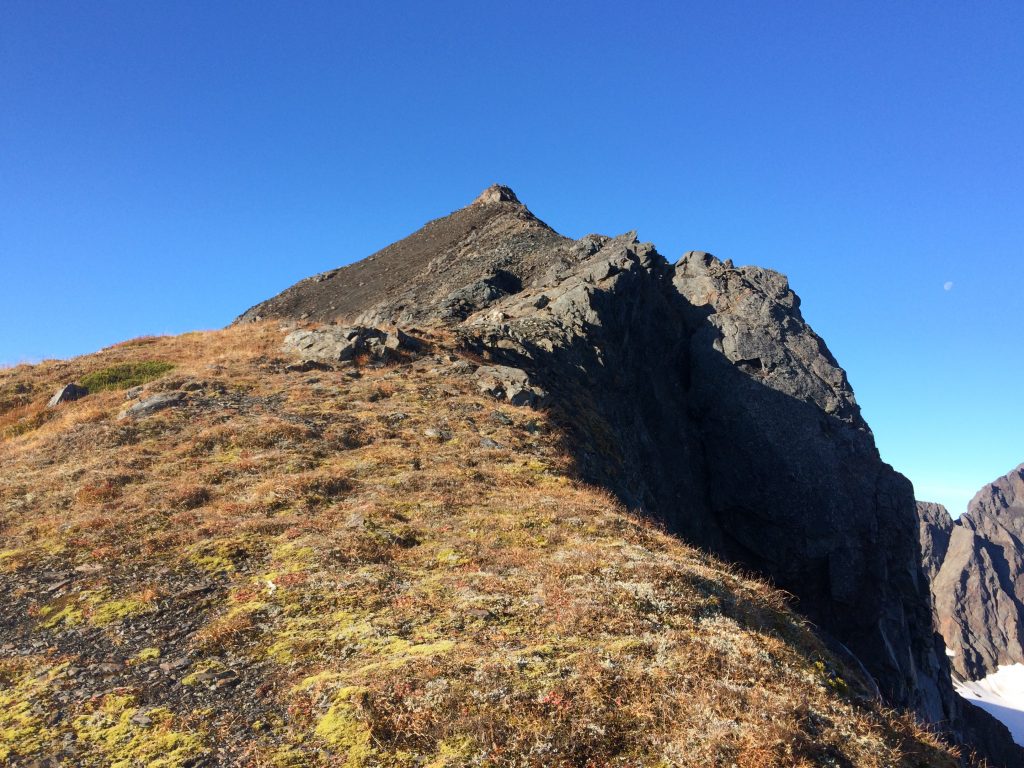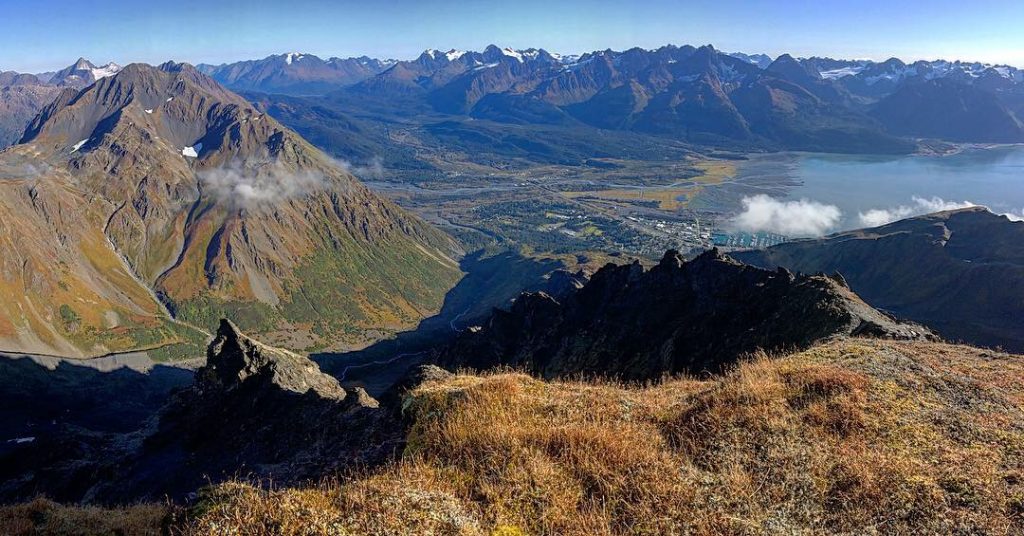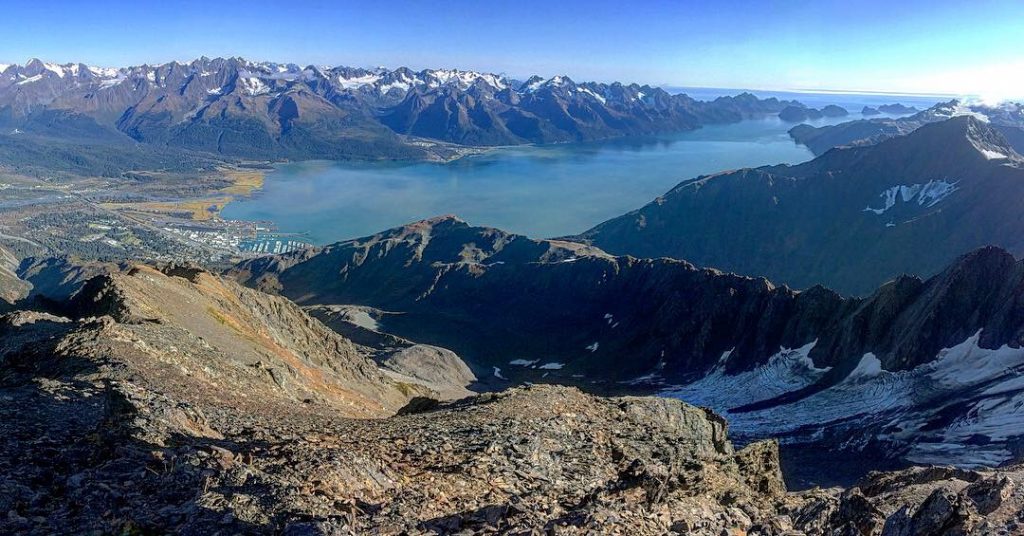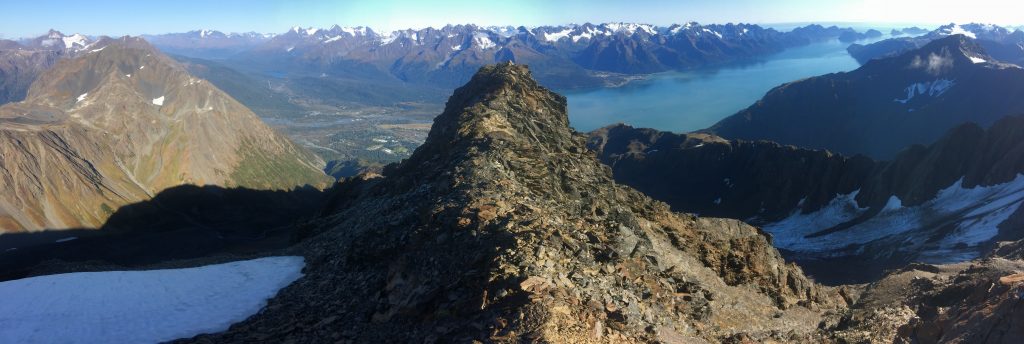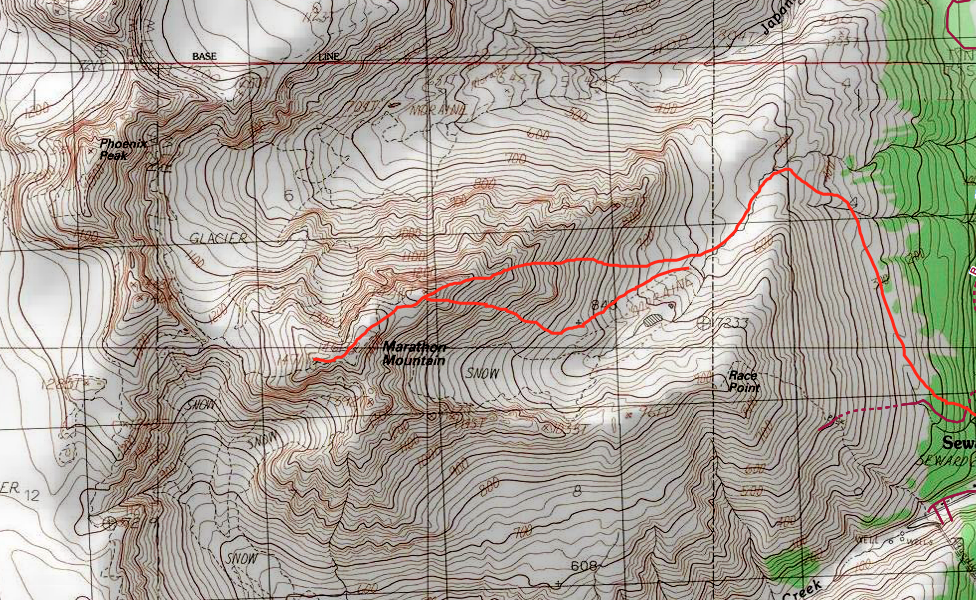 If there’s a mountain around Seward that people know about, it’s likely Mt. Marathon. Marathon’s fame is due to the annual race that’s been taking place on the Fourth of July for over a century. It brings hordes to the otherwise small and relatively quiet Alaskan town, and clogs the Seward Highway (the only route south out of Anchorage, and north out of Seward).
If there’s a mountain around Seward that people know about, it’s likely Mt. Marathon. Marathon’s fame is due to the annual race that’s been taking place on the Fourth of July for over a century. It brings hordes to the otherwise small and relatively quiet Alaskan town, and clogs the Seward Highway (the only route south out of Anchorage, and north out of Seward).
While the race is known simply as “Mt. Marathon,” the uphill/downhill race course doesn’t even come close to the summit; it only goes up to “Race Point,” which is ~1800′ and a mile and a half east of the true summit. The true summit of Marathon doesn’t seem to get reached that often. There is a false summit with a register, and it seems like it only sees about a half dozen to a dozen visitors a year. The true summit lies just a bit further west, but requires a glacier crossing with a very exposed section along a knife edge ridge of ice or snow (depending on season) with steep and icy slopes (1000’+ exposure) off both sides. Having done the route in late September, with no soft snow on the glacier (it was either exposed blue ice or old, hard firn), I was glad to have sharp steel front points on stiff mountain boots and an ice tool.
The route begins on the Marathon Jeep Trail, which is pretty civilized by Alaskan standards. This trail becomes narrower and brushier near the alpine, but is still very straightforward. It peters out in the tundra above treeline and off-trail route-finding from there leads to the NE ridge, which can be taken over false summits all the way to the true summit. Depending on the route taken up to the NE ridge, it’s 3rd-4th class. The 3rd class options, while less exposed, feature loose scree. The 4th class options provide more secure footing, but are quite exposed in places. Once on the NE ridge itself it’s pretty easy scrambling, but definitely very exposed in places. No technical gear is required to reach the prominent false summit with the register.
Beyond here, and to reach the true summit, crampons and an axe or ice tool are advisable. With softer snow earlier in the season, aluminum pons and a lightweight axe would likely suffice. Late season, burlier boots and pons with an actual ice tool are recommended as the exposed crossing would be tricky without either – and a fall, while the crossing is easy with the right gear, would likely be un-survivable. The views in all directions, especially over Resurrection Bay and toward the Harding Ice Field, are absolutely spectacular.
A look across the summit ridge glacier from near the true summit to the false summit. Note the steep ice slope (seen above pack and pole) that must be down-climbed from false summit, that becomes a short knife-edge ridge section: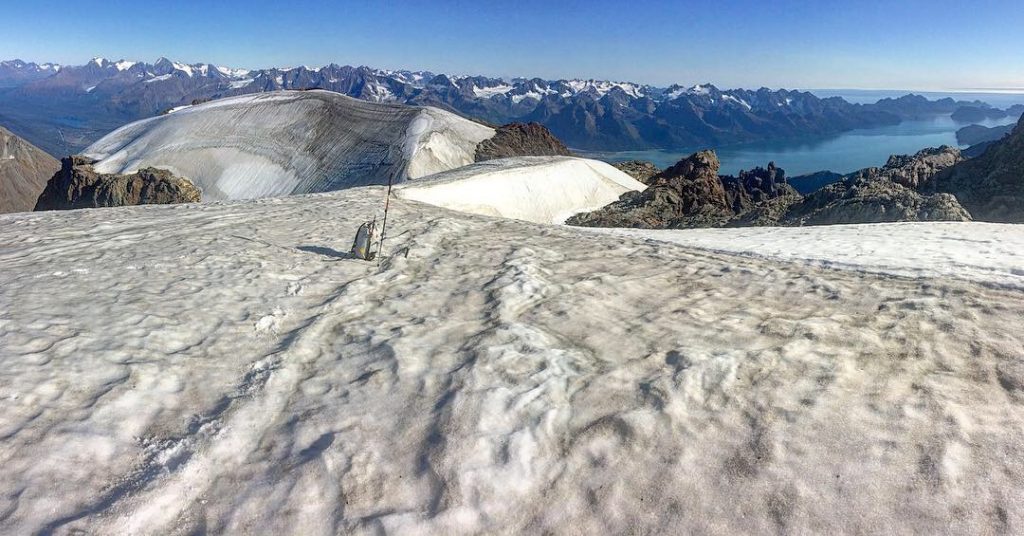 Views south towards Resurrection Bay from near the summit:
Views south towards Resurrection Bay from near the summit: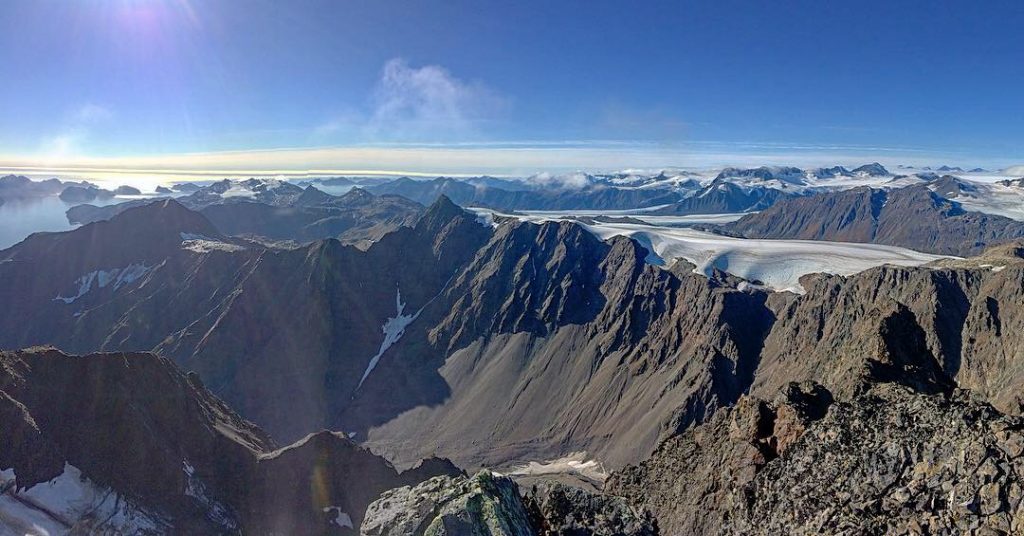
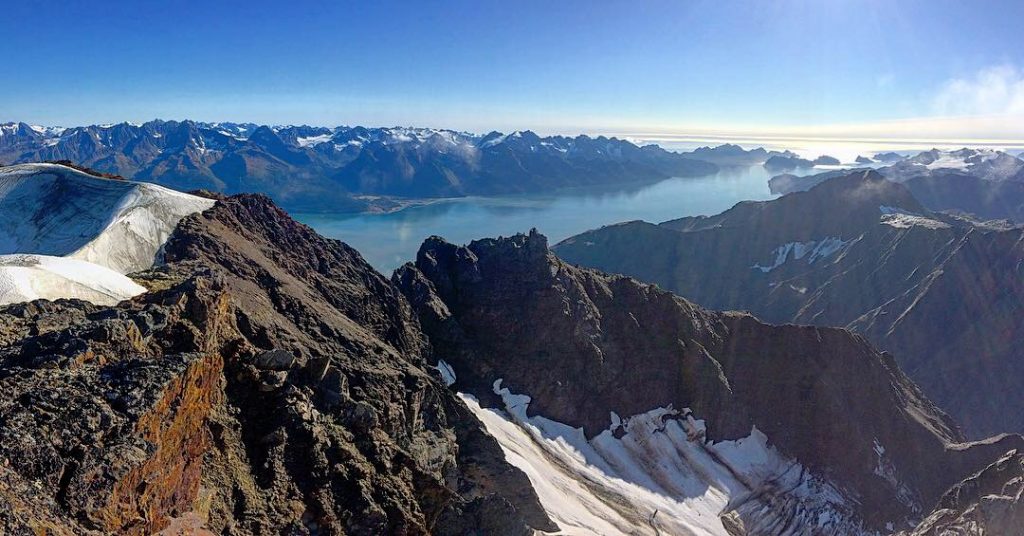 View of Phoenix Peak’s west face from near the summit of Marathon:
View of Phoenix Peak’s west face from near the summit of Marathon: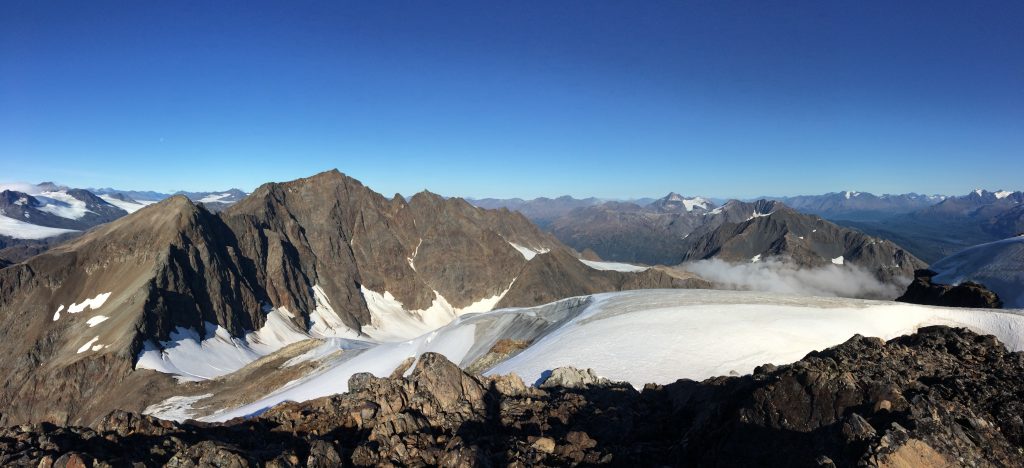 View of Phoenix Peak and Mt. Benson (a.k.a. Iron Mountain) from the NE ridge of Marathon:
View of Phoenix Peak and Mt. Benson (a.k.a. Iron Mountain) from the NE ridge of Marathon: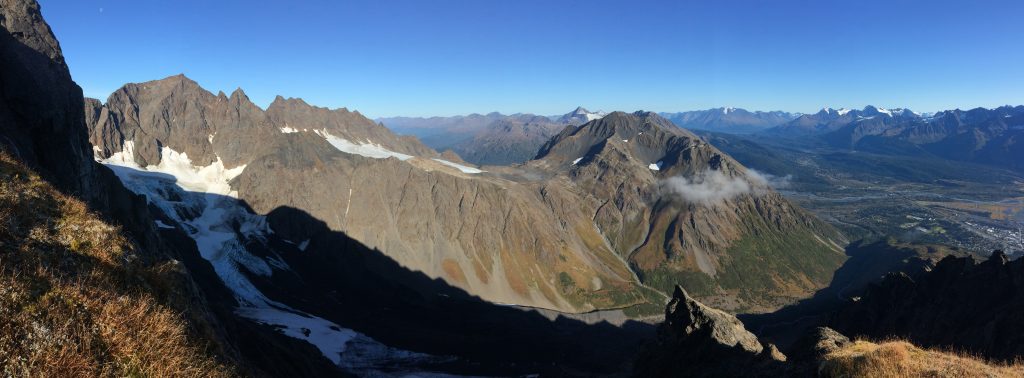
Video:
Gear:
- Scarpa Rebel Pro GTX boots
- Petzl Irvis Hybrid crampons
- Petzl Laser Speed Light ice screws
- Petzl Spatha knife
- Petzl Altitude harness
- Black Diamond Venom ice axe
- Black Diamond Oz alpine draws
- Black Diamond Nitron locking carabiners
- Black Diamond Blitz 28 pack
- Black Diamond Revolt headlamp
- J-Snare v-thread tool
- CAMP Speed helmet
- Julbo photochromatic sunglasses
- 6mm cordelette
- InReach

